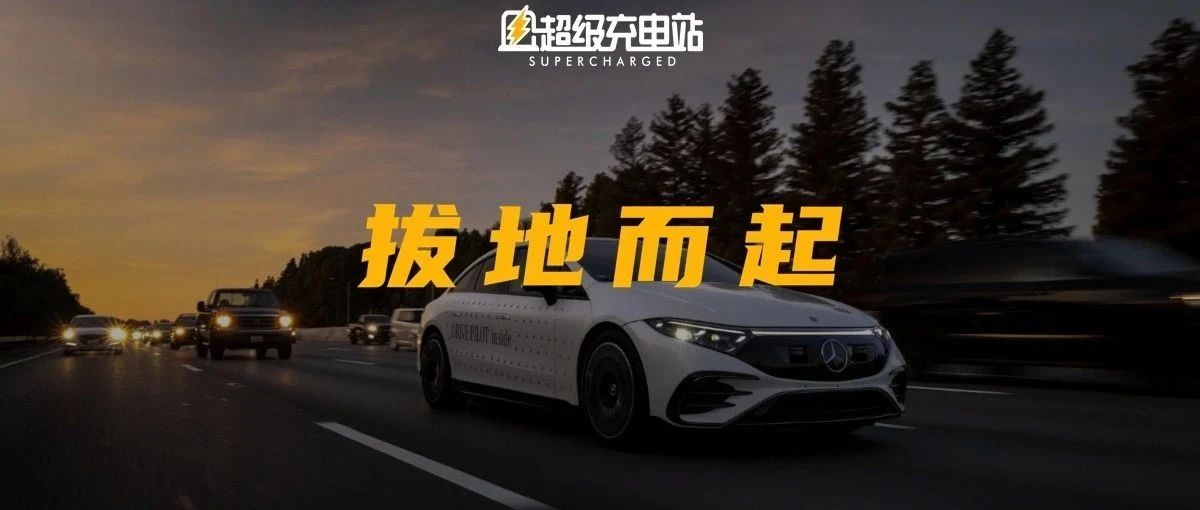Author: Chang Yan
Mercedes-Benz CEO Konstantinsson stood on the stage, tall and handsome, and held up a V sign with his fingers towards the media below.
This was the most impressive moment for me at the MB.OS launch event.
As expected, this scene did not occur during a photo shoot for executives.
The straightened two fingers represent the cornerstone of building an operating system that Konstantinsson wants everyone to understand.
In Mercedes-Benz’s launch materials, “house” is the most frequently mentioned concept image. Building a set of automotive systems in Mercedes-Benz is similar to constructing a complete set of house facilities.
Konstantinsson said that when you stand in the role of an architect, you can easily bring in two basic principles:
1. You must first understand the needs of you and the users. User experience is the most important for the house, including a strong foundation and a comfortable living space;
2. If you have experience in construction, you will know that you do not need to produce every brick and tile. Giving them to corresponding experts will be more reliable.
The foundation, comfort, and outside specialists constitute several key elements in understanding the huge transformation of MB.OS.
The Foundation
For MB.OS, Mercedes-Benz defines it as “a new architecture exclusive from chip to cloud”, which is defined so broadly and grandly because Mercedes-Benz hopes that this architecture can encompass almost all design software development functions of the company in the long term.
Firstly, through significant innovation in the underlying architecture, the stability of the development structure is ensured. All subsequent technologies are expanded on this architecture without having to start from scratch due to product changes.
The addition of sufficient functional flexibility can ensure maximum adaptation to and satisfaction of the diverse car usage demands of different users in different regions, thereby ensuring an enriched user experience.

Moreover, the integration of all the business segments of Mercedes-Benz can be ensured, and a more enriched profit model can be explored with software as the core.
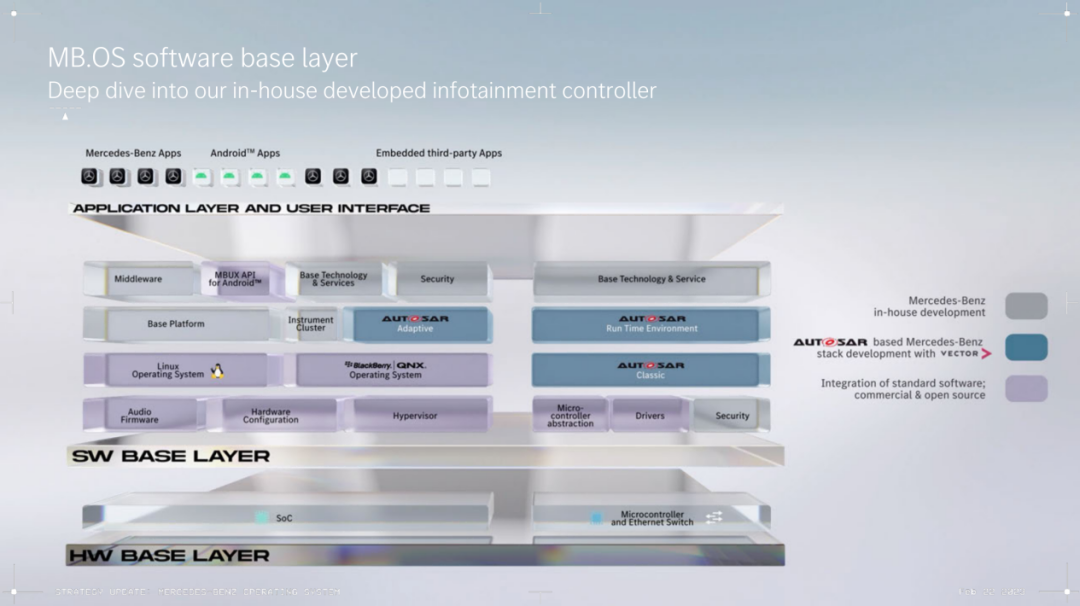
If we further delve into a more intimate experience with car usage, the three-page content on Keynote may provide a more intuitive and easily comprehensible understanding.
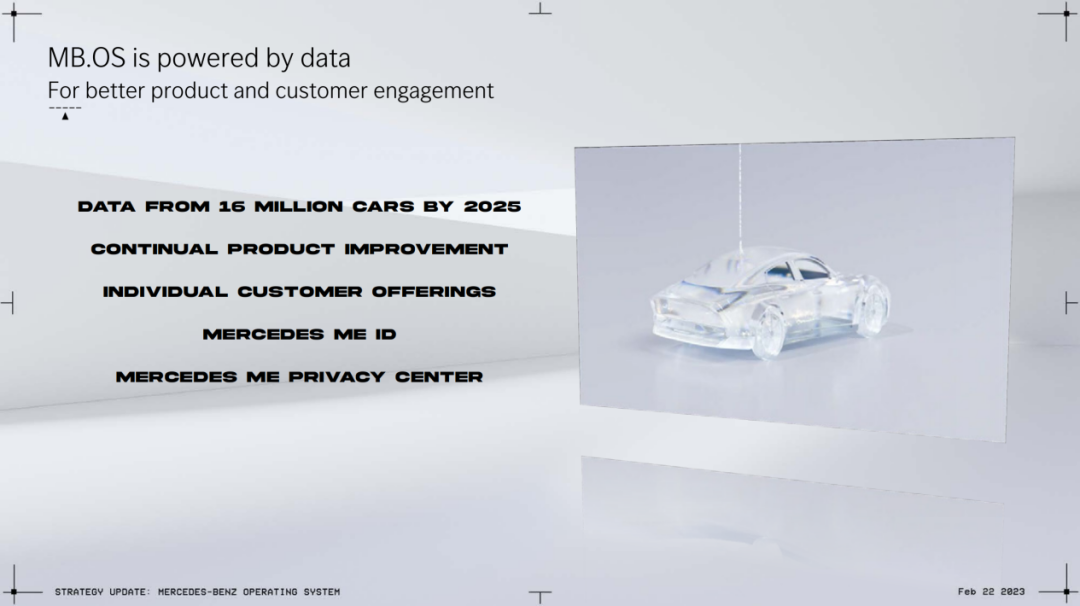
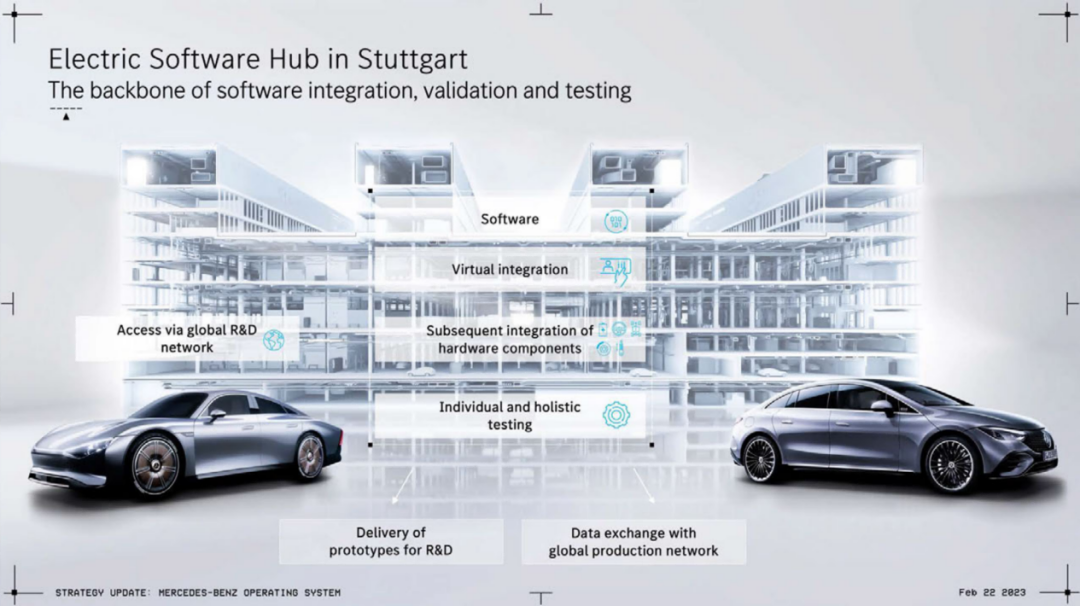
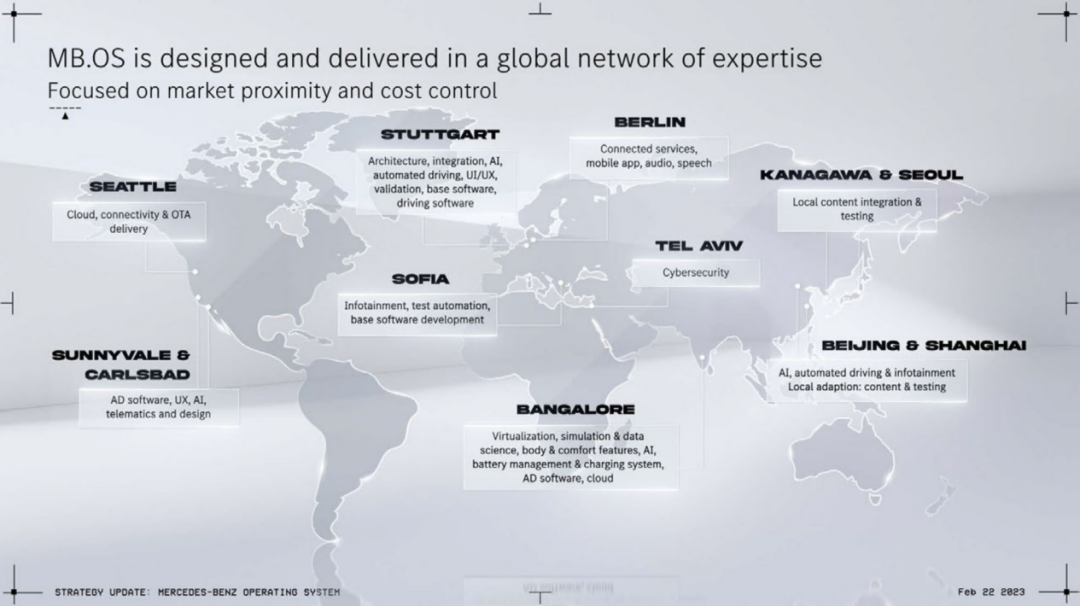
With the reliance on cutting-edge hardware, the most immersive software experience, and the consumption of the richest software content, MB.OS can provide the utmost comfort.
Comfort
Mercedes-Benz, an expert in hardware comfort, is now taking on software comfort.
Comfortable experiences are first and foremost related to the direct sensory impressions and interaction processes of software. MB.OS’s design will rapidly advance towards greater technological and realistic sensations based on existing software interfaces. At the release event, the brief demonstration of the virtual visualization of autonomous driving for a few seconds was impressive due to its precise reconstruction of the vehicle and the surrounding road environment.
Unlike many companies who like to surprise and profoundly innovate in their design, Mercedes-Benz values the continuity of user experience. This will provide convenience for many loyal Mercedes owners and reduce their learning cost in the new era of technology.
MB.OS will enter more driving scenarios for users, which also means more possibilities for users to stay in the car for a longer time. On site, we saw the potential of MB.OS for business activities through the in-car conference software and office software. With richer video and image applications and more user-friendly screen configurations, the entertainment experience can be greatly improved.

Behind these detailed functions, Mercedes-Benz will introduce more AI support, and even the engineers who explain the vehicle on site are in the field of AI. He explained that AI will be used to learn the user’s driving habits and travel needs, allowing the vehicle to be set up in a way that better suits the user’s preferences. From a larger user perspective, AI will also help designers and engineers to further optimize the product.
The use of an Android-based application layer undoubtedly takes MB.OS’s availability to a new level. Issues regarding the lack of third-party applications, slow local running speed, and infrequent updates can be solved with the help of a rich Android ecosystem.

External Experts
Introducing external experts at the operating system level does not mean that automakers are not competent in a certain field. Its main value is to let us know which aspects the decision-making layer of the automaker thinks are the most important and in need of rapid improvement.
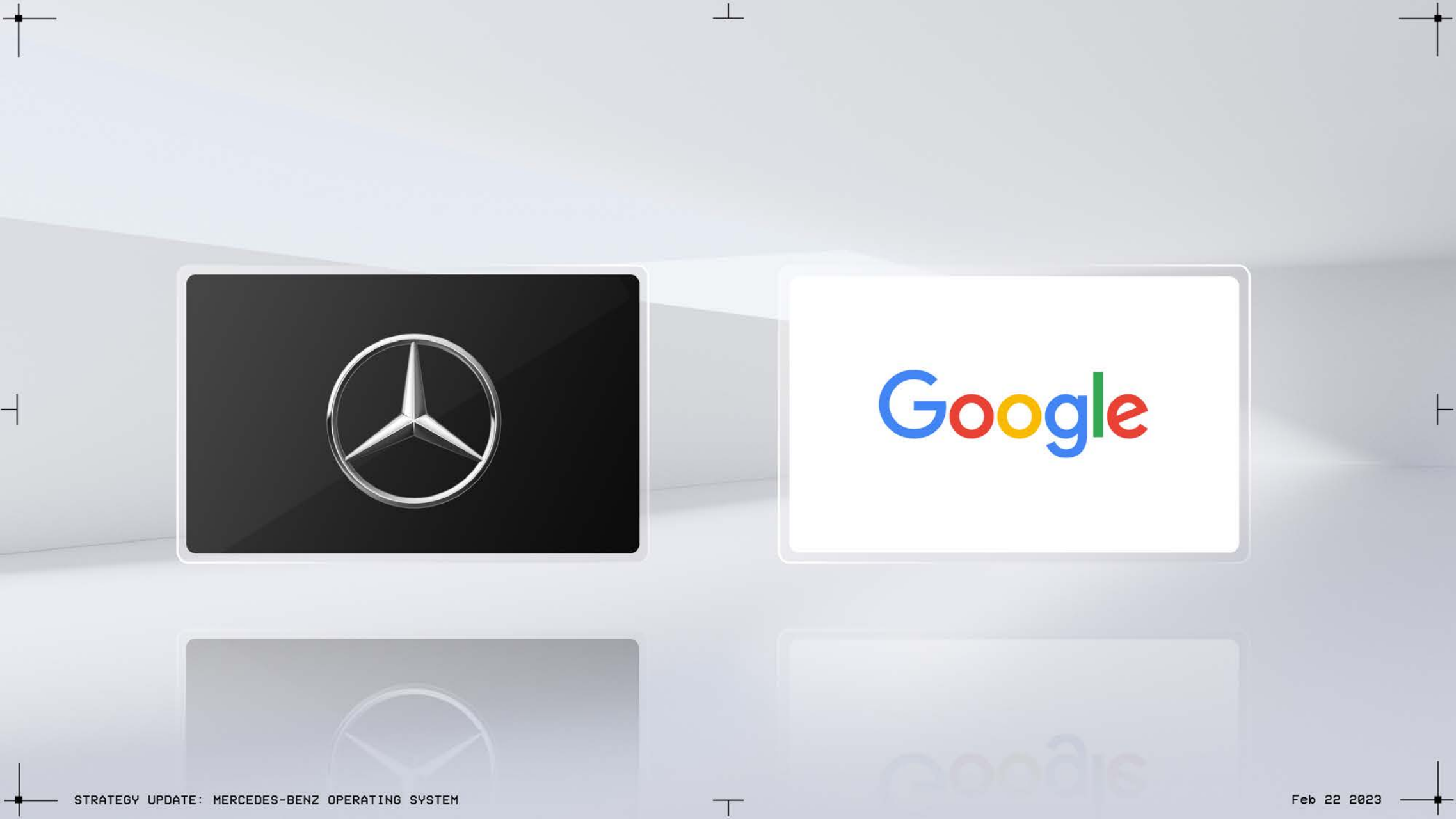
For MB.OS, autonomous driving is undoubtedly a good example. At today’s briefing, Mercedes-Benz announced that it will continue to strengthen its deep cooperation with NVIDIA, one of the strongest autonomous driving chip companies, and Luminar, one of the strongest LIDAR companies, to achieve two more important goals: better L2 level assisted driving and faster L3 level autonomous driving.
According to the plan, Mercedes-Benz’s L2 level assisted driving will further introduce urban assisted navigation driving functions, which will allow Mercedes-Benz to stand on the same starting line as most new car companies in terms of application capabilities. The L3 autonomous driving, which has no competitors, is also expected to evolve into a new generation with a top speed of 130km/h, double the current maximum speed.
At the same time, these systems will also have system-level machine learning capabilities, which can enhance the overall driving assistance ability through big data optimization.
This is not a pipe dream. In today’s demonstration video, Mercedes-Benz’s test vehicle has been able to complete complex scenarios such as automatic entry and exit ramps, automatic entry and exit roundabouts, and automatic bypassing of vehicles.
Obviously, with Mercedes-Benz’s technology capabilities alone, it is difficult to quickly break through so many technological barriers. With excellent partners, however, these capabilities can be rapidly improved.
This is also evident in collaborations such as map cooperation with Amap and cloud data cooperation with Tencent.“`markdown
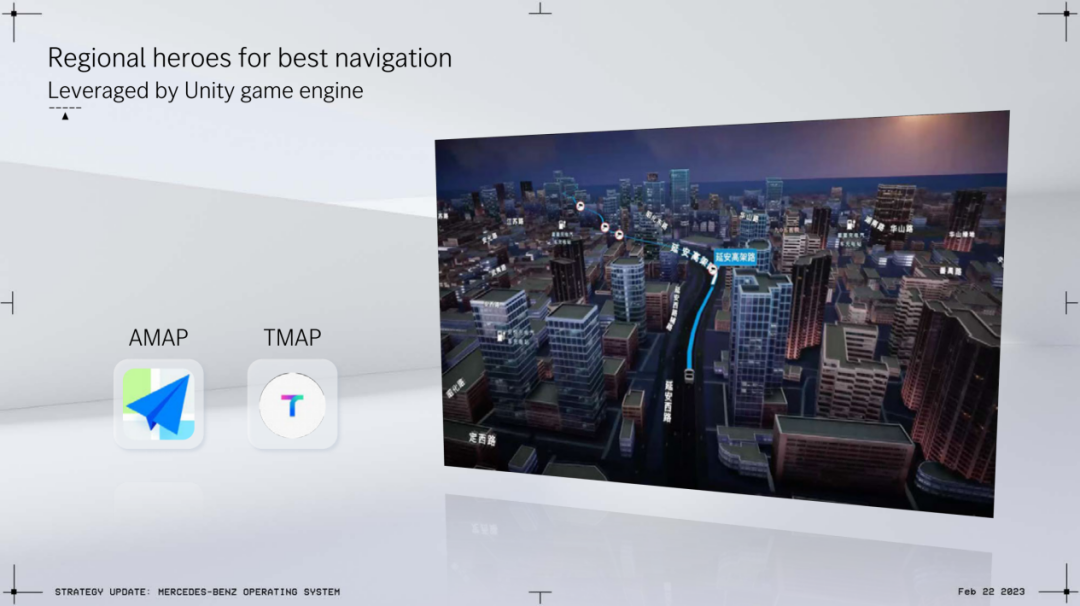
Mercedes-Benz also stated that its partnerships are not exclusive, and the brand will always choose the best partners to work with in order to enhance mutual development with a more open-minded attitude that can provide possibilities for more features.
However, Mercedes-Benz also maintains complete control over all key infrastructure, which lays the foundation for the intelligent connected services of its entire vehicle lineup while protecting and using authorized customer data.
Significance
Since the automotive industry entered the era of intelligence, the discussion of the underlying architecture has gradually formed a consensus. The building constructed by MB.OS formally enables Mercedes-Benz to have the same software composition as its most advanced rivals in the industry, which means that Mercedes-Benz’s intelligent products have officially entered the industry’s first echelon in terms of architecture.
This architecture also allows for the formal decoupling of software and hardware, which can be developed according to their own iterative cycles in their respective industries. Mercedes-Benz users will receive faster and more diverse system upgrades, and it also means that car owners can get more rich software experience during the vehicle’s life cycle.

For Mercedes-Benz, this architectural change also addresses a long-standing pain point. For traditional brands with many vehicle models, this architecture can better achieve the reuse of software and hardware capabilities, save development resources, and gradually weaken the relationship between vehicle experience upgrades and traditional model replacements. Users do not need to wait for several years, or even longer, to use the latest technology features.
Looking ahead, Mercedes-Benz expects that software-related revenue brought by MB.CONNECT and MB.DRIVE will increase to tens of billions of euros by the mid-2020s, making software profitability a real possibility. This has a special significance for Mercedes-Benz’s technological identity transformation, as it gradually shifts from a purely hardware company to a software-driven and defined company.

“`
And this is probably why Mercedes-Benz held a grand launch event specifically for MB.OS.
As the industry raises the flag of “software-defined cars,” Mercedes-Benz chooses to first build a solid foundation on the front line of in-car operating systems, and then constructs a high-rise on top of it.
Because Mercedes-Benz’s next hundred years may be inseparable from this building.
This article is a translation by ChatGPT of a Chinese report from 42HOW. If you have any questions about it, please email bd@42how.com.
